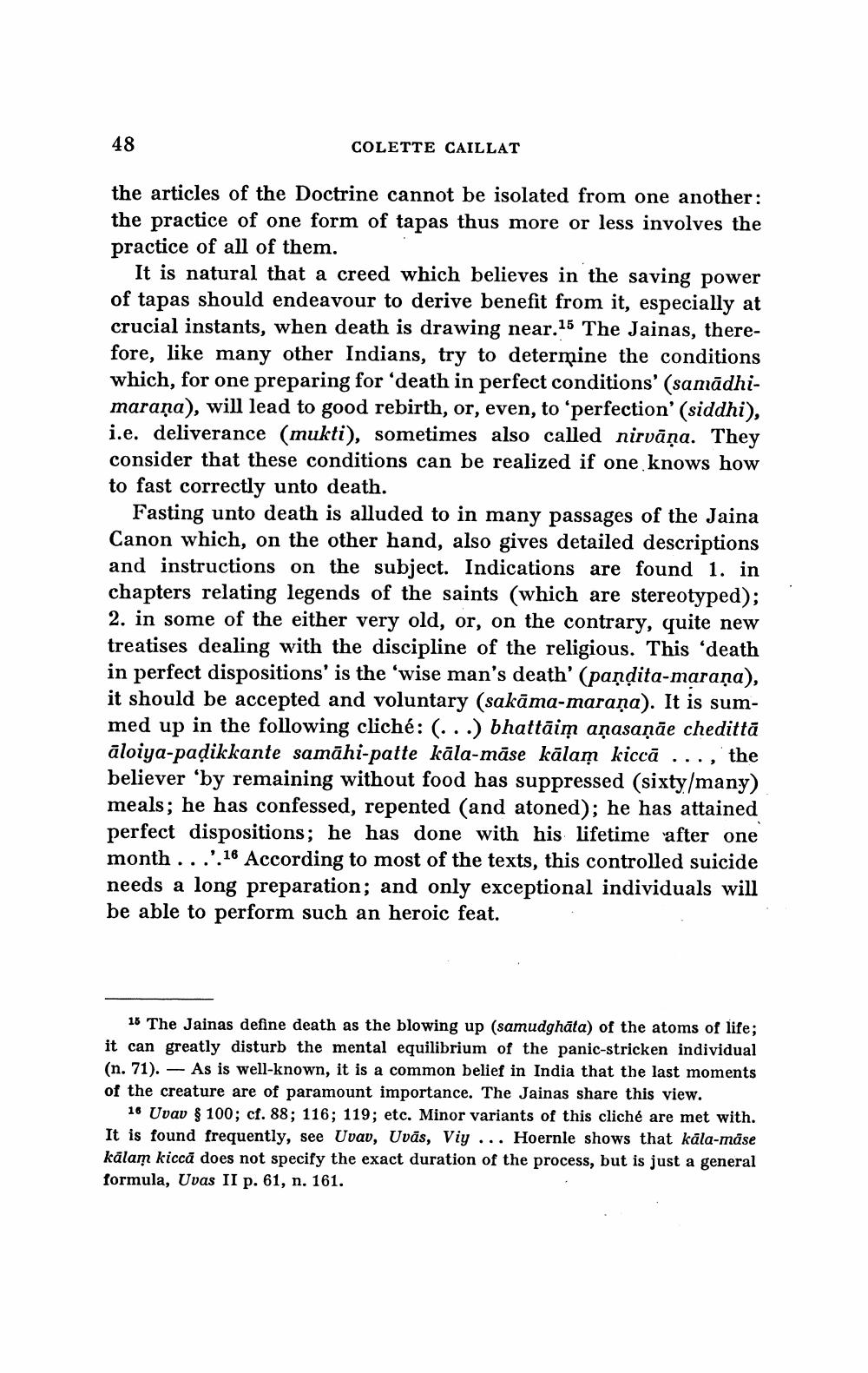Book Title: Fasting Unto Death According To Jaina Tradition Author(s): Colette Caillat Publisher: Colette Caillat View full book textPage 6
________________ 48 COLETTE CAILLAT the articles of the Doctrine cannot be isolated from one another: the practice of one form of tapas thus more or less involves the practice of all of them. It is natural that a creed which believes in the saving power of tapas should endeavour to derive benefit from it, especially at crucial instants, when death is drawing near.15 The Jainas, therefore, like many other Indians, try to determine the conditions which, for one preparing for 'death in perfect conditions' (samādhimarana), will lead to good rebirth, or, even, to 'perfection' (siddhi), i.e. deliverance (mukti), sometimes also called nirvāņa. They consider that these conditions can be realized if one knows how to fast correctly unto death. Fasting unto death is alluded to in many passages of the Jaina Canon which, on the other hand, also gives detailed descriptions and instructions on the subject. Indications are found 1. in chapters relating legends of the saints (which are stereotyped); 2. in some of the either very old, or, on the contrary, quite new treatises dealing with the discipline of the religious. This 'death in perfect dispositions' is the 'wise man's death' (pandita-marana), it should be accepted and voluntary (sakāma-marana). It is summed up in the following cliché: (...) bhattāim aṇasaṇāe chedittā aloiya-paḍikkante samahi-patte kāla-māse kālam kiccā believer 'by remaining without food has suppressed (sixty/many) meals; he has confessed, repented (and atoned); he has attained perfect dispositions; he has done with his lifetime after one month....16 According to most of the texts, this controlled suicide needs a long preparation; and only exceptional individuals will be able to perform such an heroic feat. the 15 The Jainas define death as the blowing up (samudghata) of the atoms of life; it can greatly disturb the mental equilibrium of the panic-stricken individual (n. 71). As is well-known, it is a common belief in India that the last moments of the creature are of paramount importance. The Jainas share this view. 16 Uvav § 100; cf. 88; 116; 119; etc. Minor variants of this cliché are met with. It is found frequently, see Uvav, Uvas, Viy... Hoernle shows that kāla-māse kālam kicca does not specify the exact duration of the process, but is just a general formula, Uvas II p. 61, n. 161.Page Navigation
1 ... 4 5 6 7 8 9 10 11 12 13 14 15 16 17 18 19 20 21 22 23 24
